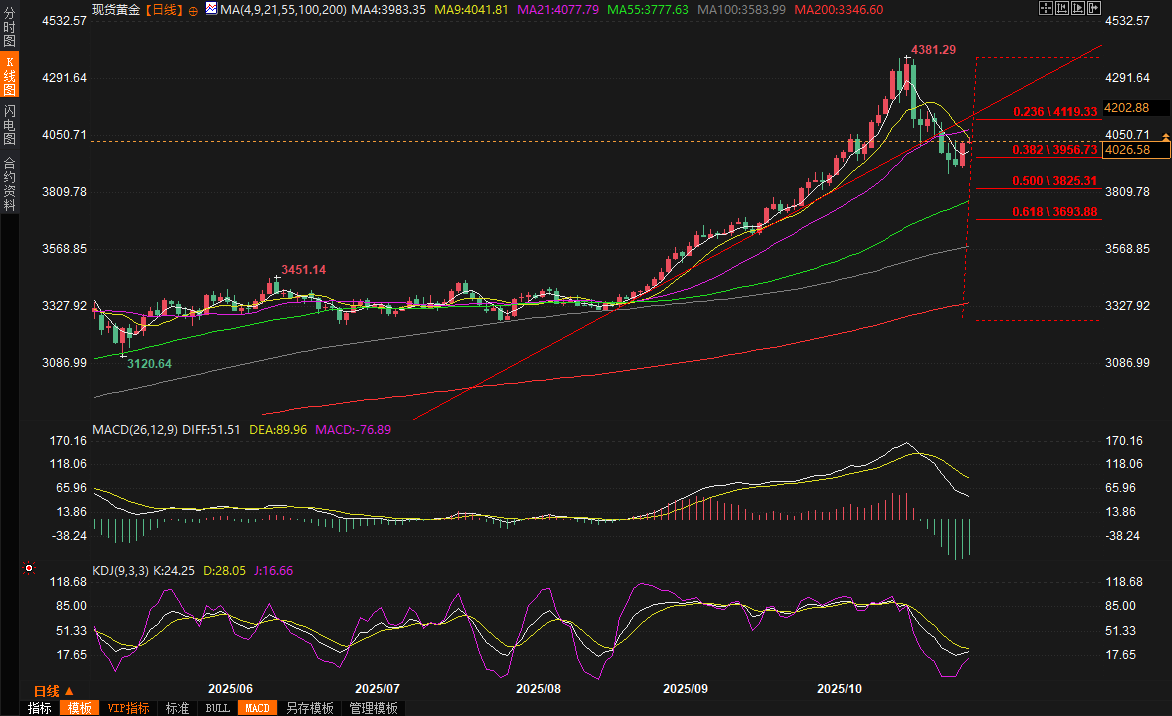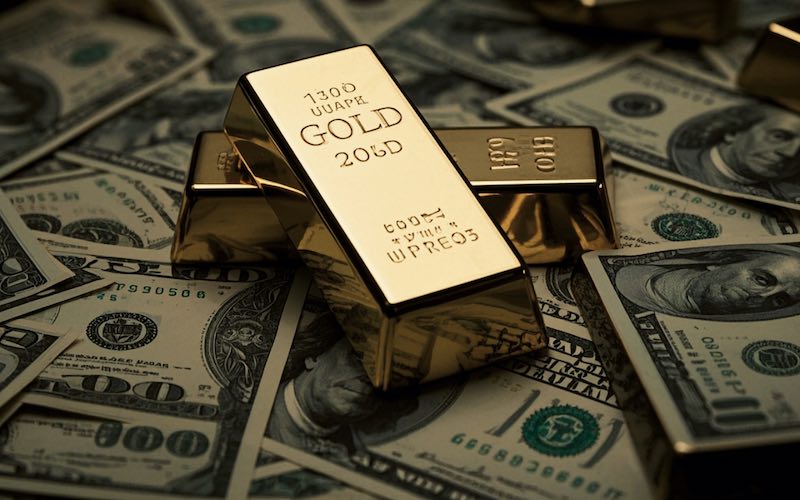Gold Trading Alert: Fed Rate Cut + Safe-Haven Rally Causes Gold Prices to Surge 2% Overnight, Reclaiming the $4,000 Mark
2025-10-31 07:16:59

The Fed's rate cut has been implemented, but the "December suspense" remains.
The Federal Reserve cut interest rates by 25 basis points on Wednesday, as expected by the market, lowering the target range for the federal funds rate to a certain level (the specific figure was not disclosed). However, Chairman Powell dropped a bombshell at the subsequent press conference: whether there will be another rate cut in December is "still undecided." He emphasized that increased policy disagreements within the Fed and the lack of key economic data due to the federal government shutdown could make further easing "too risky." Two members even publicly disagreed—Governor Milan advocated for a larger rate cut, while Kansas City Fed President Schmid worried about persistent inflation and favored holding rates steady.
The market reacted swiftly. Federal funds rate futures showed the probability of a December rate cut plummeting from 85% before Powell's speech to 71%. Lou Brien, a strategist at Chicago-based DRW Trading, succinctly observed: "Powell's communication was clumsy; either he's lost some control of the committee, or the disagreements are too great for him to impose his personal will." Despite this, Brien maintains that the labor market is more fragile than it appears, and a December rate cut remains highly probable. The low-interest-rate environment provides natural support for gold—lower funding costs reduce the opportunity cost of holding non-interest-bearing assets, dramatically increasing gold's relative attractiveness.
The so-called "truce" in US-China trade relations is a misnomer, and safe-haven demand is making a comeback.
On Thursday, Trump announced a high-profile reduction in tariffs on Chinese goods from 57% to 47% in exchange for Beijing resuming purchases of US soybeans, maintaining unimpeded rare earth exports, and intensifying its crackdown on illicit fentanyl. The news briefly boosted the stock market, but it quickly retreated. Jeffrey Christian, managing partner of CPM Group, succinctly observed: "The more details of the agreement are revealed, the more hollow it appears. The market had initially bet on a complete end to the trade war, but the reality is just a 'flash-in-the-pan' truce, and optimism has vanished."
The stock market's actions confirmed this assessment. On Thursday, all three major U.S. stock indexes closed lower: the Dow Jones Industrial Average fell 0.23% to 47,522.12 points, the S&P 500 dropped 0.99% to 6,822.34 points, and the Nasdaq Composite plunged 1.57% to 23,581.14 points. Tech giant Meta plunged 11.3%, and Microsoft fell 2.9%. Concerns about runaway AI capital expenditures, coupled with hawkish signals from the Federal Reserve, caused a sharp cooling of market risk appetite. Gold, as the ultimate safe-haven asset, naturally became a safe haven for funds.
Institutions are collectively bullish, with a target of $4,700 by the end of 2026.
Uncertainty continues to escalate, prompting institutions to raise their gold price forecasts. The Wells Fargo Investment Institute's latest report significantly increased its year-end 2026 gold price target from $3,900-$4,100 to $4,500-$4,700. The core logic is simple: geopolitical and trade policy uncertainties will continue to stimulate both private and official gold demand. The report points out that global central banks' continued gold purchases and rising concerns among private investors about inflation and currency devaluation are both contributing to upward price momentum.
From a broader perspective, although the US dollar index rose 0.38% to 99.51 at the close, its intraday high of 99.72 was a new high since August 1st. A stronger dollar usually suppresses gold prices, but this time it failed to offset safe-haven buying—demonstrating the market's sensitivity to uncertainty. The yen fell sharply by 0.9% against the dollar to 154.08, a new high since February 13th; the euro fell 0.27% to 1.1568, and the pound fell 0.31% to 1.3152, all reflecting the widening divergence in global monetary policies and the accelerated concentration of funds in gold.
Rising bond yields underscore the investment value of gold.
The US bond market was also turbulent. The 10-year Treasury yield rose 3.5 basis points to 4.093%, and the two-year yield rose 2.6 basis points to 3.612%, steepening the yield curve to positive 47.7 basis points. The $30 billion corporate bond issuance by Meta Platforms was met with overwhelming demand, oversubscribed four times, forcing traders to sell US Treasuries to hedge, pushing up Treasury yields. Guy LeBas, chief fixed-income strategist at Janney Capital Management in Philadelphia, warned that if the government shutdown continues, November labor market data may remain missing, leaving the Federal Reserve in a "blind spot" for policy decisions.
Despite rising yields and increasing real interest rates, gold still managed a 2% surge, highlighting its safe-haven appeal independent of traditional interest rate cycles. Low interest rates are merely a catalyst; uncertainty is the core driving force.
Conclusion: The third wave of the gold bull market is poised to begin.
In summary, the Fed's rate cut, yet the uncertainty surrounding its December release, the lackluster US-China trade agreement, uncontrolled AI spending in tech stocks, the prolonged US government shutdown, and the lack of government data—multiple factors negatively impacting the stock market and positively impacting gold—combined to drive a 2% overnight surge in gold prices, breaking through the $4,000 mark. The collective bullish outlook from institutions, predicting gold will reach $4,700 by the end of 2026, is not unfounded. At present, gold is not only a safe-haven asset but also a strategic allocation choice driven by both low interest rates and high uncertainty. A new round of gold price increases may have already begun.

(Spot gold daily chart, source: FX678)
At 07:15 Beijing time, spot gold was trading at $4027.66 per ounce.
- Risk Warning and Disclaimer
- The market involves risk, and trading may not be suitable for all investors. This article is for reference only and does not constitute personal investment advice, nor does it take into account certain users’ specific investment objectives, financial situation, or other needs. Any investment decisions made based on this information are at your own risk.





















